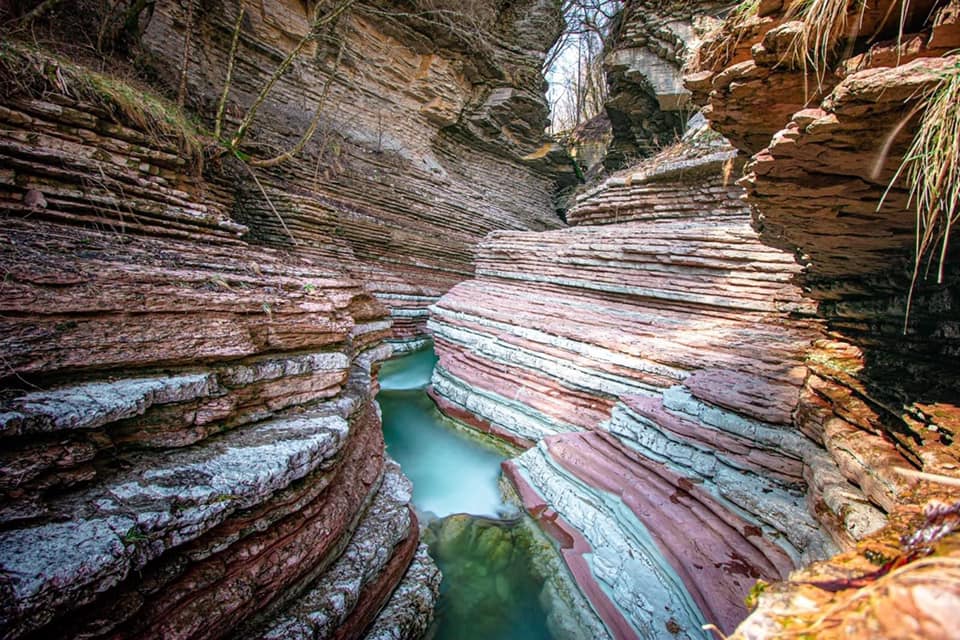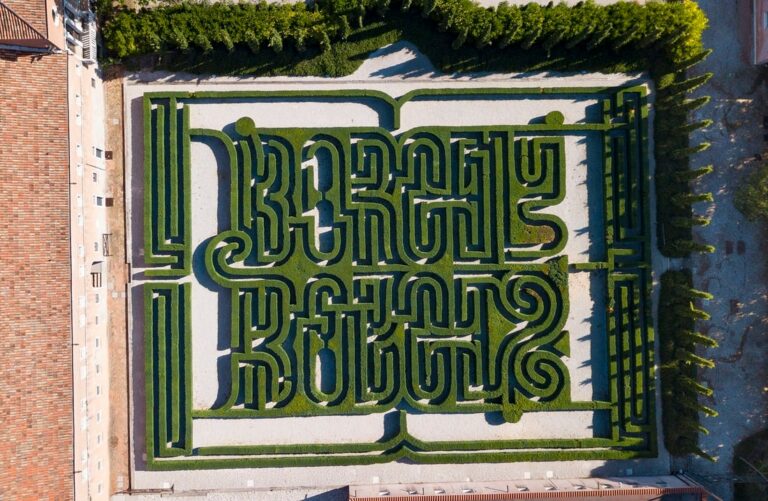Amazing nature at the Brent de l’Art in Trichiana (BL)
Understanding their name is not easy, visiting them is a delight
In Trichiana a marvel of colors, shapes and history
Article by Marina Grasso for www.tribunatreviso.it
A narrow and winding gorge that reveals smooth and layered walls colored in various shades of red, white, green and gray. A deep rift in the heart of the mountain where silence is crossed by the noisy flow of the stream, which adds its bright blue to an incredible scenery built by nature and sculpted by water. A seductive immersion in the geological history of the Dolomites, among the Brent de l’Art.
The floods of the Ardo. This is how the name of this suggestive canyon would sound in Italian. Because “Brent” in Valbelluna indicates a stream that flows at the bottom of a deep valley, hence the term “Brentana” which identifies the flood of the watercourse. “Art” is instead the dialect name of the Ardo stream, which originates from Mount Schiara and after a 12-kilometer run flows into the Piave at Belluno near what was once the city’s river port, Borgo Piave.
An enchantment to discover. Getting to the Brent is quite simple even for those who are not particularly trained, but the place is rather lacking in indications, perhaps also due to the desire to leave intact this almost dreamlike scenario where, among other things, also numerous species of birds have chosen to reproduce or stop during migrations, and where it is not unusual to meet marmots, squirrels, alpine hares, foxes and deer. A plan is also being developed to make the Brents more easily usable with works that will remain, however, in harmony with the place, but – in the meantime – to reach them you need to have a little patience and the usual dose of prudence that must accompany every alpine excursion. After having parked the car in the spaces set up in Calcherola, continue on foot and at the first crossroads take the road that descends to the left and which soon becomes a stepped path, along which there are signs illustrating the rich flora and fauna of the place and that in a few minutes of descent leads to the Brent bridge, then to the entrance of the Brent Grande.
A view from the bridge. At one time, the bridge was also the connection between the upper part of Mel and Trichiana, as well as the access road to the “calchere”, the kilns for producing lime. Destroyed by the flood in 1966, it was rebuilt only about ten years ago (here is another reason why the place is still little known) and today it is above all the place from which to admire the mouth of the Brent Grande with its colors and its forms excavated, century after century, by the stream. It is assumed that the most important natural excavation work lasted from 10 thousand to 15 thousand years, coinciding with the thaw after the end of the Wurmian glaciation (8,000-10,000 years before Christ). But it is not uncommon to find many rough stones with an almost spherical shape on the narrowest and most curved bends: they are those that whirl in a circle on the walls of the Brent and continue to shape the narrow rocky valleys, greatly amplifying the echo of the flow of the stream.
The colors of history. On the facets of the canyon you can read the action of the Ardo that engraved the cretaceous scale, like a geological map of time. The Cretaceous “Red Scale” is the rock formed in the Upper Cretaceous (90- 65 million years ago) from clayey limestone and marl which created an easily erodible material but with good vertical stability, present on the Brent de l’Art on the strata upper in shades of red, with a slight pink created by small parts of iron oxide. The “Scaglia Cinerea” is instead present in the lower part, and is made up of clayey limestone and ash gray marl. But if this is the color scale, then it is the light of the different hours of the day and the different seasons that gives the whole an extraordinary variety of shades with infinite shades.
Towards Val di Botte. From the Brent bridge, you can see still other gorges and rock formations, following the mule track that leads to Val di Botte along which a tributary of the Ardo crosses: going up it you reach a very narrow and particular Brent, the Brent della Val di Botte, then to another Brent, located downstream of Val Crosentana. For those who do not feel like tackling the route, the Brent gorges of the Val di Botte can also be seen from above, returning back to the mule track and taking the road to the right towards Val di Botte: the path climbs to the right of the I burn for about 70 meters, and as soon as the gravelly bottom becomes paved, you can admire the ravines from above (always paying close attention and not leaning too far).
Even in the car. Other Brents can be admired simply by getting out of the car: they are that of Confos, which can be appreciated from the bridge
delle Valli, and that of Campedei, located under the Ponte delle Donne (which is actually a complex of three bridges from different eras), also in Trichiana.
Better with a guide. There are many possibilities for visits and excursions to the Brent, both in summer and in winter. For those who are not experts, the advice is to stop near the bridge, before which there is also an information bulletin board (and a curious mailbox that contains a guest book that invites you to describe the sensations aroused by the visit). To make more adventurous excursions it is recommended to be well trained in the mountains, or to contact a guide. It is the safest way to visit the area without risk and appreciating all of its history. For any other information relating to the visit to the Brents, you can also refer to the Pro Loco of Trichiana, made up of volunteers who love and deeply know the area and willingly share its beauty with those who know how to appreciate it.
The spectacular panorama offered by the Brent de l’Art where the millennial flow of water has carved shapes and colors into the rock. In the photos some views of the landscape that can be enjoyed by everyone as long as they are careful and with the right equipment.
Simple walk … but watch out for shoes
The canyons of the Brent de l’Art can be reached on foot, along a path a few hundred meters from the car park in Calcherola, near S. Antonino di Tortal, a hamlet of Trichiana (half an hour drive from the Belluno exit A4). It is a simple walk, but the last sections (with steps and parapets) are steep and a bit slippery: hiking clothing and footwear are required.
On foot and swimming for the most trained
For the more indomitable (and less chilly) the Brent de l’Art are, in summer, also the ideal place for exploration canyoning, that is to walk and swim the route, rigorously equipped with wetsuit, helmet, life jacket , appropriate footwear and accompanied by a specialized mountain guide. It is an adventurous way both to visit the gorges admiring unprecedented sceneries between emerald waters and multicolored rocks of an authentic geological and ecological monument of the Belluno Prealps, but also to approach this thrilling (and not extreme, only very adventurous) sport in a severe environment but without particular difficulties and environmental obstacles.
In winter
When the ice gives a show
Fascinating and cool in summer, the excursion to the Brent in winter becomes even more exciting. Especially if the cold is long and intense, and the water course turns into a thick layer of ice. Reserved only for suitably equipped experts is a walk on the frozen Ardo bed, which in colder years allows you to cross the entire Brent Grande up to the spectacular exit muffler amidst white ice flows. Brent Rizzo is also magnificent during periods of ice with its narrow gorges where it is not uncommon for experts to cut the ice with a chainsaw to open extraordinary passages.
A special environment tailored for sportsmen
In addition to the Brent de l’Art, the whole Trichiana area is an environmental area of great interest, with the wetlands of Pranolz and Busnador and the river area of the San Felice bridge covered by trails for mountain biking and Nordic walking.
Articles by Marina Grasso for www.tribunatreviso.it of 20.07.2017
Photos credit by Davide De Bona




